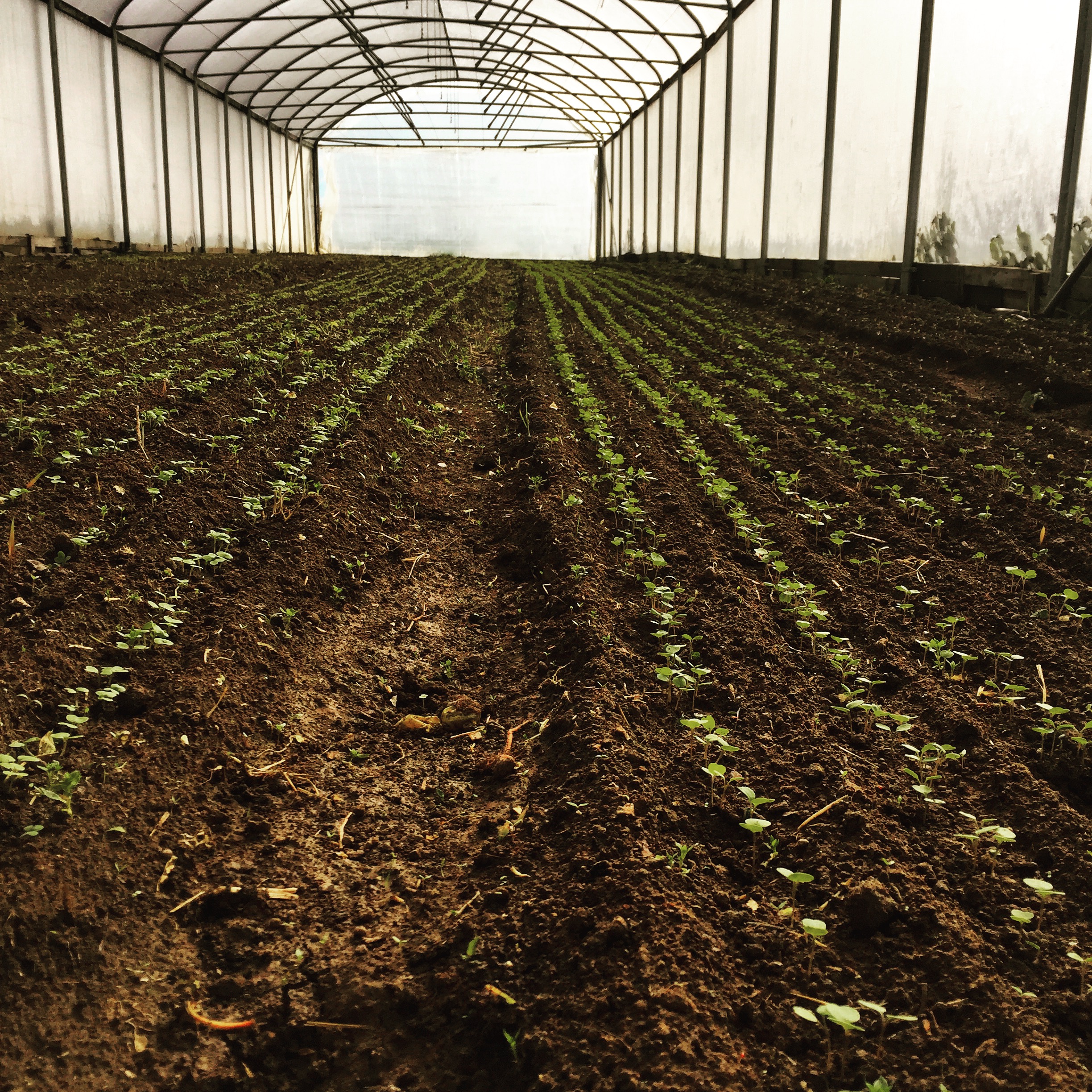
Some of us from Concentrates were recently at a public workshop with Dan Sullivan and Nick Andrews from OSU, about nutrient management for organic farmers. It helped us dial-in some of our soil test interpretation, something we commonly help our customers with.
Turns out that most veggie farms are maintaining excessive phosphorus levels. Phosphorus runoff contributes to die-off in our waterways–the dead spot in the Gulf of Mexico is from phosphorus runoff. They advised that 50 ppm is an adequate phosphorus level.
As far as potassium, it can easily get too high with the application of manure or certain composts. Potassium is one of the nutrients that a plant will “accumulate,” meaning they will keep on taking more even when they don’t need it, even to the detriment of other nutrients, like magnesium. Symptoms of a magnesium deficiency can be present when potassium is in excess, even though adequate magnesium is in the soil. Potassium levels are adequate at 200 ppm.
Sulfur is hard to test for, since much of it is stored in the organic matter, but lab analyses do not account for this portion of the overall sulfur. That being said, they felt comfortable advising the application of sulfur if the soil test indicates less than 20 ppm. Sulfur is very affordable as gypsum, and applying it generously is not a risky proposition. A surplus of sulfur or calcium in the soil won’t affect the plant; nor does it become a gas; nor do they leach readily.
Calcium and magnesium are rarely deficient. As we said above, symptoms of magnesium “deficiency” are often from a potassium excess; likewise, symptoms of calcium “deficiency” are often in fact a nitrogen excess, or due to uneven watering. If a soil test in fact indicates a magnesium deficiency (<120 ppm), applying 10-20# Mg can be helpful.
Boron is deficient in most of our soils here in the Willamette Valley, but a boron deficiency only presents acute problems for certain crops– beets and brassicas, especially. For those crops, an indicated deficiency can be remedied by applying 1-3# boron/acre. We carry small units of Solubor (20.5% boron) for adding this boron as a foliar spray; or, you can get a similar effect with a healthy dose of kelp meal or Azomite, trace mineral sources high in boron.
Nitrogen is a complicated question, involving assessing the nitrogen values from your cover crops, as well as any contributions you might expect from your years of building organic matter. OSU has conducted tests and reached the conclusion that the best way to factor for nitrate from organic matter is to conduct nitrate tests throughout the season–once, when the crop in question has a few true leaves, and again at the end of the season but before winter rains.
We send our soils off to a lab for analysis, and the lab prints their own recommendations at the bottom of the page. But Dan and Nick reviewed that these recommendations are not in sync with OSU’s decades of research for our region–sometimes, they recommend excessive applications; sometimes, inadequate. So we use the thresholds endorsed by the land-grant universities and their research to dial-in our own advice.
Dan and Nick dismissed the value of evaluating cation ratios, or as a percentage of the saturation of the CEC.
Go to the next level by reading OSU’s publications–
